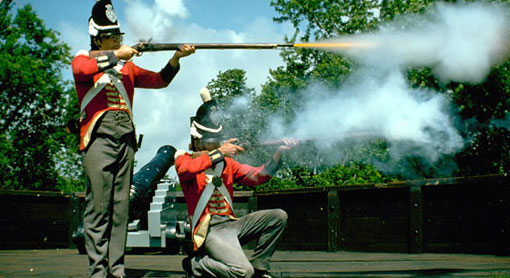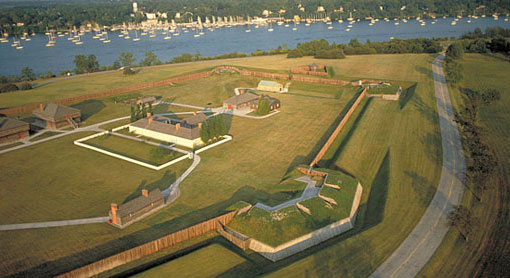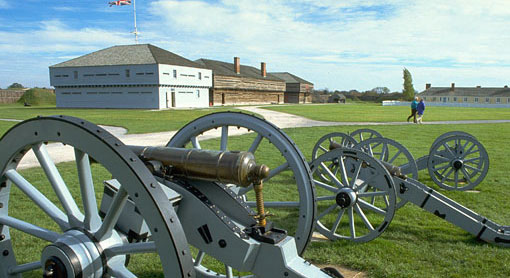Niagara-on-the-Lake - A Historic Area
Step back in time to one of the most intriguing periods in Canadian history. Niagara was a battlefield from Fort Erie to Niagara-on-the-Lake as the British attempted to maintain sovereignty from the invading American army. History lives in Niagara. Battlefields, museums, monuments and graveyards all tell the story of Niagara's history.

Costumed interpreters at many of Niagara's historical landmarks bring the past to life in the recounting of tales of bravery and loyalty and pioneer life. Distinctly Ontario architecture is prevalent throughout Niagara's many small towns, many of which were founded over two hundred years ago.
The history of Niagara goes back thousands of years, but the arrival of the Europeans saw huge changes come to one of Canada's most beautiful areas. In May 1535, Jacques Cartier left France to explore the New World. Although he never saw Niagara Falls, tales of the magnificent falls were recounted to him by the Indians he met as far away as the St. Lawrence River. Samuel de Champlain visited Canada in 1608 and in his journals he talks about the legendary cataracts but he too, never witnessed them for himself.

Etienne Brule, the first European to see Lakes Ontario, Erie Huron and Superior, may also have been the first to behold the Falls, in 1615 although nothing was recorded of his visit. That same year, the Recollet missionary explorers arrived in Ontario. They were followed a decade later by the Jesuits. It was a Jesuit father, Gabriel Lalemant, who first recorded the Iroquois name for the river- Onguiaahra, meaning "the Strait". The name "Niagara" evolved from those origins.
In 1651, the fur- trade rivalry between the Huron and Iroquois Tribes was heating up. The Iroquois Nation completely dessimated the Neutral Tribe who were the first native tribe to take up residence in the Niagara area. Until the American Revolution, the Iroquois managed to keep white settlers out of Niagara almost completely.
In December 1678, Recollet priest Louis Hennepin visited Niagara Falls and his visit was recorded. Many artists, intrigued by the journal entries of Hennepin have attempted to portray that first sighting of the cataracts artistically.

Nineteen years later, he published the first engraving of the Falls in his book Nouvelle Decouverte. The Falls obviously made a great impression of Hennepin, for he estimated their height to be 183 meters, more than three times what it really is.
In 1812, by request of President James Madison, the United States congress declared war on Canada. Artifacts from that war dot the riverside, as do monuments erected later, such as the one erected to the memory of Sir Isaac Brock at Queenston, just a short drive from both Niagara Falls and Niagara on the Lake.



